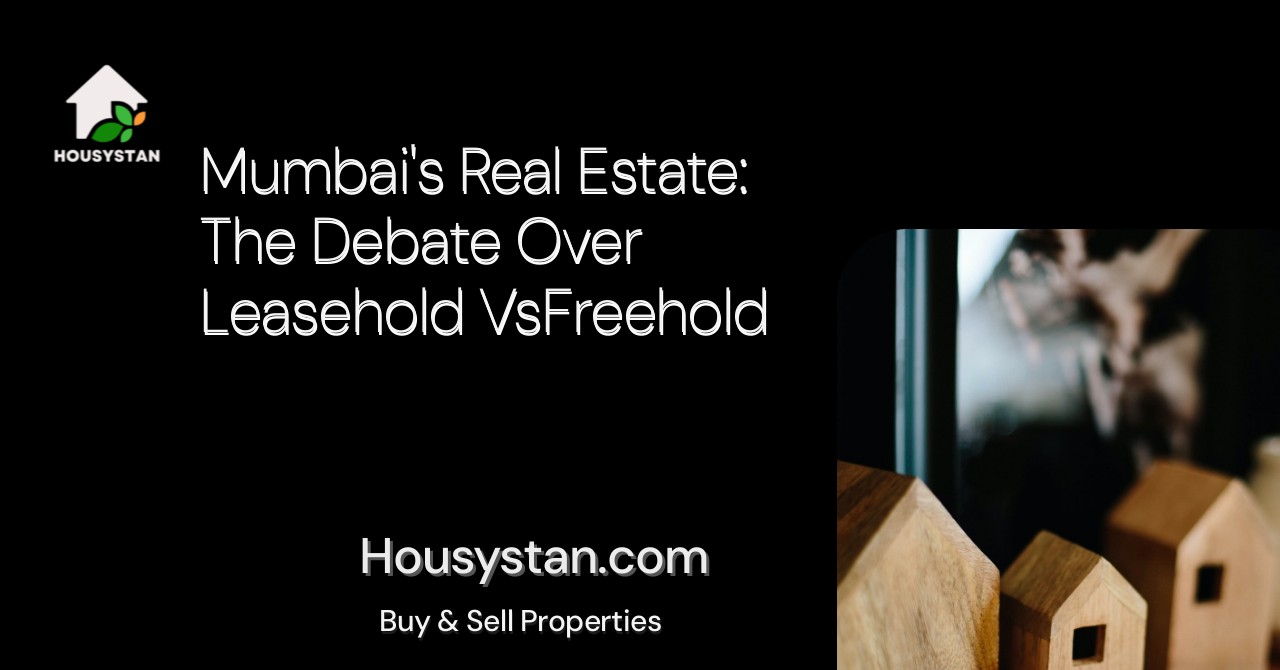Mumbai's Real Estate: The Debate Over Leasehold VsFreehold
Read latest blogs and articles from Housystan

The Information mentioned here was last updated on:
4/12/2025Mumbai’s real estate market stands as one of India’s most dynamic and sought-after property destinations. With its thriving economy, diverse culture, and ever-growing population, the city’s demand for residential and commercial spaces consistently rises. Amidst this bustling property landscape, the debate between leasehold and freehold ownership has become increasingly significant for investors and homebuyers across Mumbai. Understanding the key differences between leasehold and freehold properties is essential for anyone considering an investment or purchase in Mumbai’s real estate sector.
In Mumbai, leasehold properties are those where the land is owned by a government authority or a private entity and is leased to the buyer for a fixed tenure, typically ranging from 30 to 99 years. At the end of this period, ownership of the land reverts to the original owner unless the lease is renewed. Leasehold properties often have lower upfront costs, making them an attractive option for first-time buyers or investors looking for affordable entry points in prime Mumbai localities. However, restrictions on modifications, resale, and the need to pay ground rent can sometimes limit the flexibility enjoyed by leasehold owners.
On the other hand, freehold properties in Mumbai grant complete ownership of both the land and the structure built upon it. This absolute ownership allows buyers full control over their asset, enabling them to sell, lease, or modify the property as they please, subject to local regulations. Freehold real estate usually commands a premium price due to its perpetual ownership and fewer legal complexities. Homebuyers seeking long-term security and capital appreciation often prefer freehold options, especially in Mumbai’s upscale neighborhoods such as Bandra, Juhu, and Powai.
- Verified Tenants/Buyers
- Unlimited Property Listing
- Zero subscription/charges fee
The choice between leasehold and freehold properties in Mumbai depends on individual priorities, investment goals, and budget. While leasehold options can offer affordability and lower initial investment, freehold properties provide unmatched autonomy and long-term value. Prospective buyers should carefully evaluate their needs, consult with local real estate experts, and consider future growth prospects in Mumbai’s vibrant property market. Whether investing in a modern apartment in Andheri or a heritage bungalow in South Mumbai, making an informed decision will ensure lasting value and satisfaction in the city’s ever-evolving real estate environment.